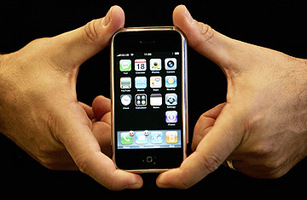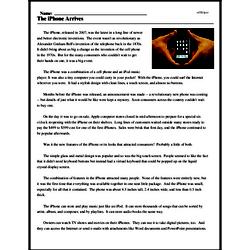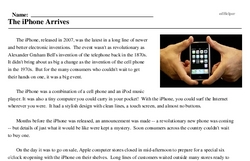The iPhone Arrives
The iPhone, released in 2007, was the latest in a long line of newer and better electronic inventions. The event wasn't as revolutionary as Alexander Graham Bell's invention of the telephone back in the 1870s. It didn't bring about as big a change as the invention of the cell phone in the 1970s. But for the many consumers who couldn't wait to get their hands on one, it was a big event.
The iPhone was a combination of a cell phone and an iPod music player. It was also a tiny computer you could carry in your pocket! With the iPhone, you could surf the Internet wherever you were. It had a stylish design with clean lines, a touch screen, and almost no buttons.
Months before the iPhone was released, an announcement was made -- a revolutionary new phone was coming -- but details of just what it would be like were kept a mystery. Soon consumers across the country couldn't wait to buy one.
On the day it was to go on sale, Apple computer stores closed in mid-afternoon to prepare for a special six o'clock reopening with the iPhone on their shelves. Long lines of customers waited outside many stores ready to pay the $499 to $599 cost for one of the first iPhones. Sales were brisk that first day, and the iPhone continued to be popular afterwards.
Was it the new features of the iPhone or its looks that attracted consumers? Probably a little of both.




